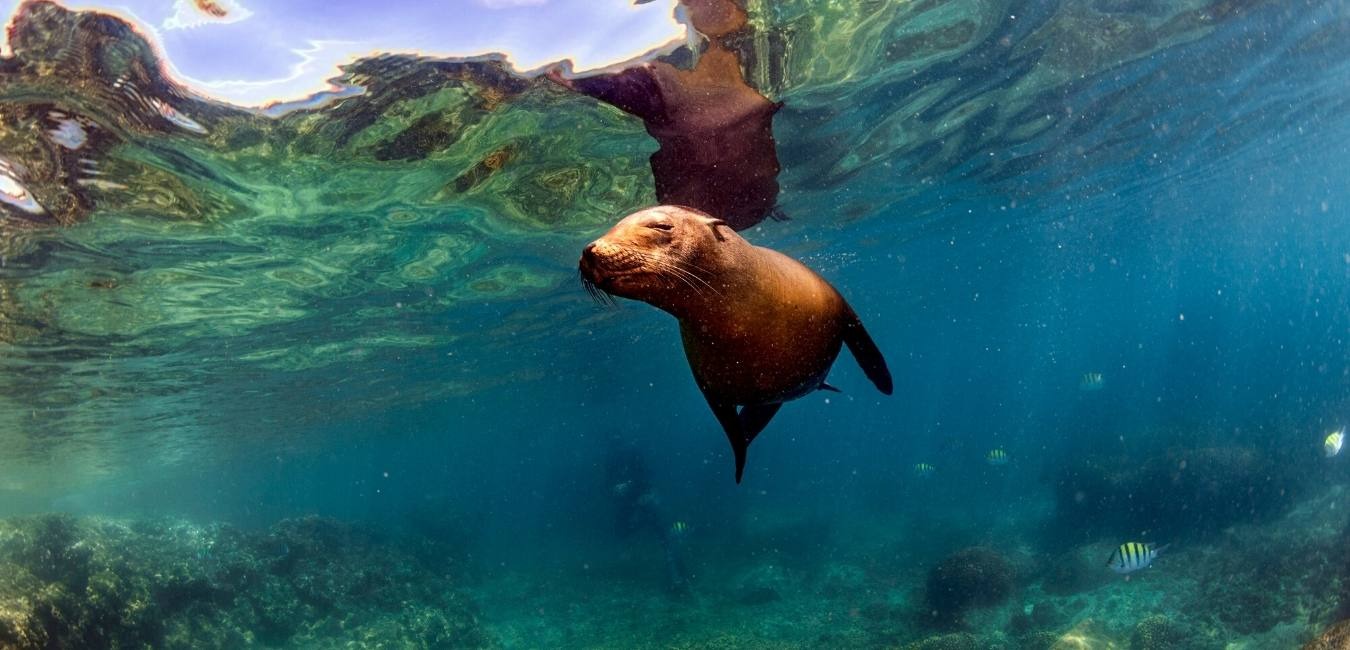Breakfast service. Deep-water snorkeling. Bartolome. Dry landing Nature walks
Chinese Hat Islet
Visit Chinese Hat, a small island located just southeast of Santiago. The island's unique shape is reflected in its name. It is worth the trip for those who visit the island. It is centrally located, but it is not the most visited site in the region. Chinese Hat has been restricted by the National Park Service. Only multi-day cruises of 14 or fewer passengers are allowed at this location. The landing site is located on a crescent-shaped, white sand beach that is home to Sea Lions as well as Sally Lightfoot Crabs. Sombrero Chino's trail explores the volcanic origin of this island, which is one of the most prominent in the region. It is extremely fragile and can break apart when people walk on it. These breaks cause sharp outcroppings, so it is important to wear sturdy walking shoes. On the island, you will find patches of Pahoehoe Lava and cracked lava. Although the path doesn't take you up to the red rust sides that make up the Chinese Hat, but it does allow for spectacular views of the waves below. Snorkeling near Chinese Hat can cause a stir. White-tipped sharks, Galapagos Penguins, and Sea frequent this area.
Santiago Island: Sullivan Bay
Lunch service. Santiago Island. Wet landing at Sullivan bay. Nature walk. Deep-water snorkeling
This amazing volcanic site was named for Bartholomew James Sullivan who was the first lieutenant aboard HMS Beagle which brought Charles Darwin to the Galapagos. This stunning landscape is made up of two eroded scoria volcanic cones that were engulfed in a recent (in geoological terms) pahoehoelava flow. It is believed to be the first lieutenant on HMS Beagle, the ship that brought Charles Darwin to the Galapagos. Although the lava flow is more than 170 years old, its isolation on the island has made it look much younger.
Guide briefing. Farewell cocktail. Navigation to Santa Cruz Island and dinner service
